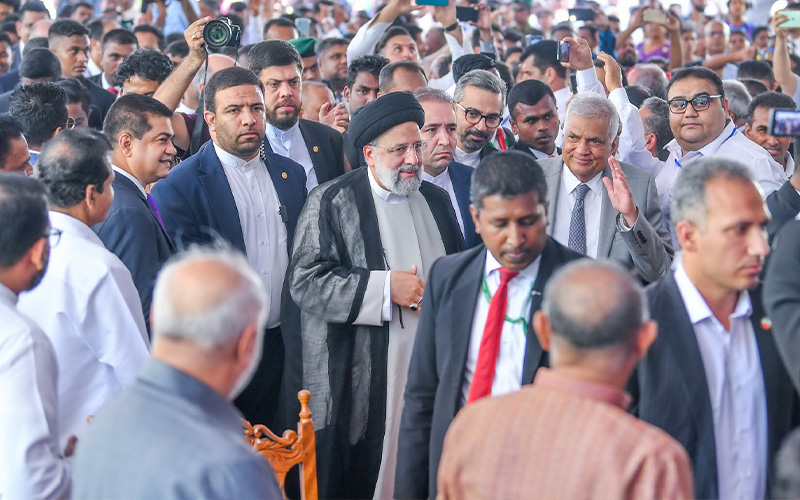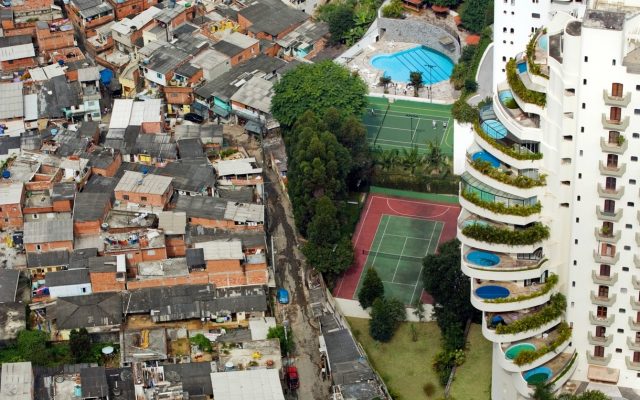By Britney Martil
A comprehensive assessment of the Azerbaijan-Armenia war over Nagorno-Karabakh uncovers a complex and deeply ingrained geopolitical history in the Caucasus area. Originating in the aftermath of World War I and the subsequent collapse of the Russian Empire, the resultant power vacuum afforded Azerbaijan and Armenia the opportunity to declare their independence.
The Soviet Union’s strategic adoption of a “divide and rule” policy escalated tensions even further, especially around the Nagorno-Karabakh region, which has a heterogeneous population of ethnic Armenians and Turkic Azerbaijanis. Despite the foundation of the Nagorno-Karabakh Autonomous Region during the Soviet era, latent tensions persisted, highlighting the complexities of the Caucasus geopolitical landscape.
The fall of the Soviet Union in the 1990s was a watershed moment, reigniting territorial conflicts over Nagorno-Karabakh as both Azerbaijan and Armenia declared aspirations for independence.
The ensuing two-year conflict in 1992, which cost 30,000 lives, led to notable displacement and witnessed Armenia not only gain supremacy over Nagorno-Karabakh but also conquer Azerbaijani territory. Russia’s evident favoritism toward Armenia was a critical factor in this conflict, influencing the war’s result and shaping the postwar landscape.
The impact of Russian mediation in the crisis, along with a historical fondness for Armenia, highlights the deep geopolitical mechanisms at play.
Following the First Nagorno-Karabakh War, Armenia gained control of the territory and a corridor connecting it to the mainland. The agreement, however, fell short of resolving basic issues, resulting in ongoing tensions and intermittent escalation.
Understanding the complexities of geopolitical history requires a comprehensive grasp of historical, ethnic, and regional power dynamics, since these elements continue to shape the present backdrop of Nagorno-Karabakh.
Unraveling the Layers
Armenia’s apparent victory marked the conclusion of the Nagorno-Karabakh conflict in 1994, but it was an asymmetrical resolution that failed to address the underlying tensions between Azerbaijan and Armenia. On the contrary, it turned into a prelude to long-running, simmering conflicts and border confrontations.
The dormant conflict reached a tipping point in 2020, when Azerbaijani forces began a strategic offensive to recover Nagorno-Karabakh, backed by modern air defense capabilities, massive rocket artillery, and Turkish support. Following 44 days of intensive battle, Azerbaijan emerged victorious, regaining control of a significant chunk of the territory.
Contrary to confident predictions, the 2020 conflict failed to end in a permanent resolution. In the aftermath, Azerbaijan adopted a “salami-slicing” strategy, gradually pushing on Nagorno-Karabakh’s remaining territories.
Azerbaijani military forces strengthened their rule in Armenia’s Syunik and Gegharkunik provinces in 2021, annexing an estimated 50 square kilometers of Armenian territory. Tensions rose even higher in September 2022, when Azerbaijan launched massive operations towards the Armenian border, implementing strategically important portals.
Complicating the situation, Azerbaijan imposed a military blockade on areas within Nagorno-Karabakh still under Armenian control, ostensibly to curb the illicit flow of weapons. Numerous observers, however, saw this as a premeditated strategy aimed at weakening the Republic of Artsakh’s Armenian-backed defensive forces over time.
This notion was confirmed in September 2023, when Azerbaijan launched another major military operation against Artsakh, resulting in the collapse of the Artsakh Defense Army and the displacement of nearly 120,000 Armenian citizens.
These violent events highlight the lasting and multifaceted complexity of the Azerbaijan-Armenia war, with historical grievances and geopolitical agendas still shaping the region’s current battles.
Humanitarian Fallout in the Wake of Azerbaijan’s Military Operation in Nagorno-Karabakh
In the aftermath of Azerbaijan’s 24-hour military operation in September, the enduring geopolitical shift marked the end of three decades of de facto self-governance for Nagorno-Karabakh, triggering a significant exodus of its population. This decisive victory by Baku over local security forces not only disrupted the balance of power in the South Caucasus but also left residents in a state of uncertainty regarding their future.
While the enclave is internationally recognized as part of Azerbaijan, it has been predominantly populated by ethnic Armenians, who are now grappling with the trauma of the conflict and the reality of displacement.
The mass departures have thrust key priorities to the forefront, particularly within the humanitarian realm. External actors, wielding influence over Baku, must urgently advocate for Azerbaijan’s cooperation in providing humanitarian aid and ensuring a safe exit for those wishing to leave Nagorno-Karabakh.
Additionally, safeguarding the rights of those who choose to stay or may contemplate returning is imperative. International pressure should push Baku to accept UN monitors to oversee the evolving human rights situation on the ground.
From a political perspective, the primary focus should be on continuing efforts to reach a settlement between Armenia and Azerbaijan, aiming to avert further conflict in this war-scarred region. Disputes over interstate borders and trade routes remain potential flashpoints that could reignite hostilities.
The upcoming leader-level meeting facilitated by the European Union on October 5 presents a crucial opportunity for diplomatic resolutions.
The rising tensions and the rapid one-day war marked a culmination of Azerbaijan’s military successes, building on the 2020 conflict. Despite international condemnation, Baku’s strategic positioning steadily improved during escalations in 2022.
The situation took a dire turn with Azerbaijan’s blockade on the Lachin corridor in December 2022, exacerbating humanitarian conditions in Nagorno-Karabakh.
As the conflict unfolded in September, a new war seemed imminent, despite diplomatic assurances. The subsequent military offensive by Azerbaijan prompted a swift victory, drawing criticism globally. However, regional allies such as Turkey expressed support for Azerbaijan, while Russia refrained from intervening decisively.
The ceasefire following the military operation triggered a humanitarian crisis, with displaced ethnic Armenians fleeing Azerbaijani-controlled territories. The opening of the Lachin corridor initiated a mass exodus, symbolizing the tragic unraveling of the lives of those who once called Nagorno-Karabakh home.
The international community must grapple with the immediate needs of those affected, emphasizing the urgency of addressing the humanitarian fallout in the wake of this devastating conflict.
Breaking the Chains of History: Transformative Shifts in Regional Power Dynamics
The developments of September 2023 deviated from the historical records of the Azerbaijan-Armenia conflict, ushering in a paradigm shift in the region’s geopolitical environment. While many portrayed the battle as another chapter of the century-old animosities, a crucial shift occurred: Armenia, faced with Azerbaijan’s aggression, opted not to react, allowing Baku to establish a victory in a one-day conflict.
Prime Minister Nikol Pashinyan’s moves provoked frustration from the Armenian people, who accused him of prioritizing political goals before national wellbeing, weakening his government’s legitimacy.
Some perceive Pashinyan’s strategic caution as a pragmatic response to the current power imbalance favoring Azerbaijan. Two major variables cause this discrepancy.
First, Azerbaijan’s friendly ties with the West, as well as significant revenue from oil and gas exports, allowed for major military modernization, whereas Armenia’s poor economy hampered such progress.
Second, Azerbaijan had steady support from its longstanding ally, Turkey, but Armenia found Russia, its historical partner, reluctant to swiftly interfere. Russia’s refusal was a significant change from its previous security assurances to Armenia, increasing concerns about Moscow’s dependability as a long-term ally.
Azerbaijan’s influence grew at the altar of Armenia’s territorial ambitions and prestige, causing a significant shift in regional power relations. Turkey came out on top, exploiting its backing for Azerbaijan to increase its power in the Caucasus.
The breakup of the Soviet Union in 1991 created an opportunity for Turkey to fill a power vacuum in Central Asia and the Caucasus. The current conflict has only strengthened its position. Russia’s apparent desertion of Armenia casts doubt on Moscow’s sustainability as an enduring partner, prompting Central Asian countries to reassess their alliance.
Prime Minister Pashinyan’s admission of a strategic error’ in counting on Russia indicates a possible shift in Armenia’s security orientation. As demonstrated by joint military exercises with the US, Armenia appears inclined to cultivate closer ties with Western nations. However, the intricacies of disentangling historical alliances with Russia and Iran pose significant challenges, considering strategic infrastructure dependencies.
The envisioned westward pivot could encounter obstacles, and others speculate that, amid geopolitical shifts, the dynamics in Karabakh might remain stagnant, given Armenia’s adversaries’ military advantage.
Humanitarian Fallout in the Wake of Azerbaijan’s Military Operation in Nagorno-Karabakh
In the aftermath of Azerbaijan’s 24-hour military operation in September, the enduring geopolitical shift marked the end of three decades of de facto self-governance for Nagorno-Karabakh, triggering a significant exodus of its population.
This decisive victory by Baku over local security forces not only disrupted the power balance in the South Caucasus but also left residents in a state of uncertainty regarding their future. While the enclave is internationally recognized as part of Azerbaijan, it has been predominantly populated by ethnic Armenians, who are now grappling with the trauma of the conflict and the reality of displacement.
The mass departures have thrust key priorities to the forefront, particularly within the humanitarian realm. External actors, wielding influence over Baku, must urgently advocate for Azerbaijan’s cooperation in providing humanitarian aid and ensuring a safe exit for those wishing to leave Nagorno-Karabakh.
Additionally, safeguarding the rights of those who choose to stay or may contemplate returning is imperative. International pressure should push Baku to accept UN monitors to oversee the evolving human rights situation on the ground.
From a political perspective, the primary focus should be on continuing efforts to reach a settlement between Armenia and Azerbaijan, aiming to avert further conflict in this war-scarred region.
Disputes over interstate borders and trade routes remain potential flashpoints that could reignite hostilities. The upcoming leader-level meeting facilitated by the European Union on October 5 presents a crucial opportunity for diplomatic resolutions.
The rising tensions and the rapid one-day war marked a culmination of Azerbaijan’s military successes, building on the 2020 conflict. Despite international condemnation, Baku’s strategic positioning steadily improved during escalations in 2022.
The situation took a dire turn with Azerbaijan’s blockade on the Lachin corridor in December 2022, exacerbating humanitarian conditions in Nagorno-Karabakh.
As the conflict unfolded in September, a new war seemed imminent, despite diplomatic assurances. The subsequent military offensive by Azerbaijan prompted a swift victory, drawing criticism globally. However, regional allies such as Turkey expressed support for Azerbaijan, while Russia refrained from intervening decisively.
The ceasefire following the military operation triggered a humanitarian crisis, with displaced ethnic Armenians fleeing Azerbaijani-controlled territories. The opening of the Lachin corridor initiated a mass exodus, symbolizing the tragic unraveling of the lives of those who once called Nagorno-Karabakh home.
The international community must grapple with the immediate needs of those affected, emphasizing the urgency of addressing the humanitarian fallout in the wake of this devastating conflict.
Britney Martil is a law student at the Kotelawala Defence University.
Factum is an Asia Pacific-focused think tank on International Relations, Tech Cooperation, and Strategic Communications accessible via www.factum.lk.
The views expressed here are the author’s own and do not necessarily reflect the organization’s.


